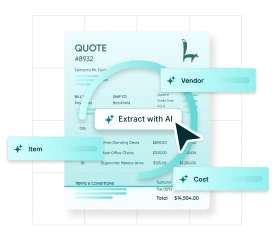Spend Visibility: Why It Can Be Difficult To Create Budget Reports
To compile a report, you need data with a capital D — in other words, information that you can rely upon, and base your insights and analyses on. One of the reasons why Budget Reports are so hard to compile in many organizations today is that spend data continues to be unorganized, inaccurate, inaccessible and, in some cases, absent altogether.
But we may be getting ahead of ourselves — let us, at first, understand what a Budget Report is. A Budget Report, to put it simply, is a report that compares your budget during a defined period against the actual expenditure during the same period — in other words, Projected vs Real or Planned vs Incurred.
As for the difficulties of creating budget reports, it’s often the case that organizations are at pains to determine how much they have spent during a given month or quarter — whatever the time interval they choose to report on. The difficulty (and often enough, the inability) to obtain an accurate and up-to-date account of actual spending essentially boils down to the organization’s lack of Spend Visibility.
Here are some crucial factors that influence the level of Spend Visibility within an organization:
Lack of a Purchasing Process: It’s hard to find organizations that follow any kind of purchasing process. Indeed the legacy process — Requisition to Approval to Purchase Order Creation — is only ever seen in a few companies. Documentation that acts as a system of record — especially Purchase Orders — can provide accounting and finance managers with advanced information about how much the company is projected to spend, even before receiving invoices. But, in many companies today, particularly younger upstarts, the purchasing process is a foreign concept.
Manual Process: Even when companies do have a clearly outlined purchasing process, it is often a highly antiquated one (this is true, particularly, at established manufacturing companies). As printed documents like POs, Invoices and Shipping Documents change hands and get scattered across different departments and people, it becomes difficult to track spending. When it does become time to generate the monthly budget report, it becomes a daunting task to then manually scavenge for such documents and build out spend data — not to mention the fact that such reactive reporting is riddled with inaccuracies and errors.

Preview AI Intake for Orders
Take the product tour to see how the new intake experience works.
